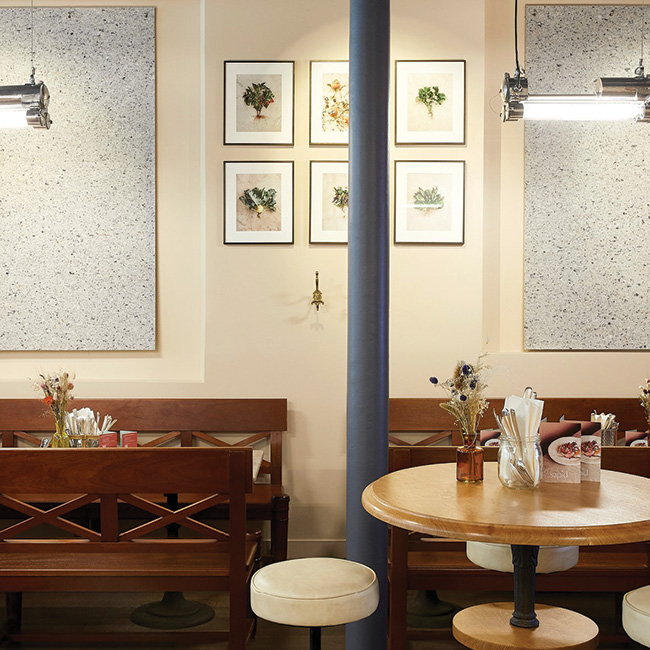Interview: Alain Ducasse

The French-born Monégasque chef and businessman, Alain Ducasse, who has always been a pioneer of world-class cuisine, talks to Victoria Gibson about a more sustainable future through food, meaningful collaborations and relaxing.
What do you remember most about growing up in Southern France?
During my childhood, I learnt something incredibly important: before cooking, there is nature. I grew up on a farm, (in Castel-Sarrazin) in the southwest of France. To prepare the meals, we used to go to the vegetable garden and pick the ripe vegetables. Nature dictated our menus. I always kept this lesson in mind during my career as a chef.
You started working in kitchens from a young age. What is the best piece of advice you received from another chef?
My first years were spent with some of the most prominent figures of the time: Michel Guérard, Roger Vergé and Gaston Lenôtre. Among them, Alain Chapel was certainly the one who left the strongest imprint on my vision of cooking. He used to say: “Cooking is much more than recipes.” This is probably the most important advice I ever heard.
What do you look for in an apprentice or chef?
Craving – the unstoppable desire to learn and to express his or her personality.
There are many avenues in the world of Alain Ducasse – chef, restaurateur, teacher, businessman, author and publisher – what is a typical day like for you?
I’m fortunate enough to have no typical day – every one is different. However, I would say that half of my time is spent with food, either tasting recipes or products. And the rest is devoted to new projects.

The terrasse at La Bastide de Moustiers in Provence, is prepared to welcome guests for lunch © Pierre Monetta
Your restaurant Sapid has a plant-based menu and has long been an ambition for you. Why is now the right time?
Sapid is the most recent step of a very long-term venture. It began in 1987, when I proposed an entirely vegetarian menu at Le Louis XV, in Monaco. This was a bold decision: at that time, no one would have thought that a three-star restaurant was legitimately allowed to propose such a menu. Then, in 2014, and still in a three-star restaurant, I created Naturalité (au Plaza Athénée in Paris), based on vegetables, cereals and a few fish. In 2020, during the shutdown of the restaurants due to the pandemic, I developed a click and collect version of Naturalité. It was a jolly good success.
That’s why I opened Sapid in September 2021. It offers a very accessible, laid-back version of Naturalité. I believe that more and more people are becoming aware that one has to drastically rethink our way of eating. It’s a question of health for the eaters as well as for the planet.

The entrées at Sapid include burrata, poêlée de champignons de Paris, jus de cuisson acidulé © Atelier Mai 98
You collaborate with many chefs and professionals – most recently ADMO and Aux Lyonnais – how do these partnerships develop into reality?
I define myself as an art director: I give the idea and I gather the talents able to bring this idea to reality. In fact, this is the way I have worked for years and this is why I have been able to open many restaurants in the world.
One clarification though: Aux Lyonnais and ADMO are two different stories. At Aux Lyonnais, I passed the baton on to two remarkable women, Marie-Victorine Manoa, the chef, and Gabrielle Aguilo, the maître d. ADMO, at the Musée du Quai Branly-Jacques Chirac, is a 100-day pop-up where an unprecedented dialogue between French and Spanish cuisines takes place. It is the first time that legendary chef Albert Adrià has come to Paris to cook. It paves the way for a contemporary European haute-cuisine.

Ragoût de pois chiches mijotés aux épices, œuf mollet, is one of the plats on offer at Sapid © Atelier Mai 98
You have presented food in the most prestigious places in France to a range of clients. Is there a venue in France that you would like to serve in, or perhaps a person who you wish to cook for, that you haven’t already?
What is at stake is not to serve prestigious venues or clients. What counts is to connect with today’s eaters – all sorts of them, including the younger generations. And to attract them to the culinary experience that they love, i.e. a healthier and more sustainable one.
Your business is international. Is there any area of the world that is unexplored for you?
We are only present in nine countries. Which is good news: there is still room for plenty of new projects!
You have opened an ice cream factory and are planning to open a biscuit factory. Are there any plans to open other outlets?
I also opened La Manufacture du chocolat in 2013 and La Manufacture du café in 2019. Both have many outlets: 22 in France, one in London and seven in Japan.
Do you have a favourite restaurant in France?
It is hard for me to only name one out of hundreds of excellent colleagues.
Where do you like going on holiday in France?
La Bastide de Moustiers in Provence. This is a thirteen-room country inn with a restaurant I opened in 1995 and where I love to go to revitalise.

Imagined by Alain Ducasse and developed by chef Romain Meder, Sapid was opened in September 2021 © Atelier Mai 98
Quick-Fire Round
Savoury or sweet?
Both – but a very moderate amount of sugar for pastry.
Cooking or teaching?
Cooking is teaching – not only in schools but also in the daily work in the kitchen.
Favourite ingredient/produce to cook with?
When you spend your life tasting recipes, having a preference is a luxury you can’t afford.
City or countryside?
Depends on my state of mind. The contrast is probably what I prefer.
Sapid is now open at 54 rue de Paradis, 75010 Paris. Sapid.fr | ducasse-paris.com
From France Today magazine
Lead photo credit : Alain Ducasse © Philippe Vaurès Santamaria
Share to: Facebook Twitter LinkedIn Email
More in Alain Ducasse, best French restaurants, Food, French food, vegetarian food in France, vegetarian restaurants in France
Leave a reply
Your email address will not be published. Required fields are marked *



